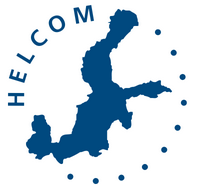The current status of reception facilities for sewage, as well as their use, are among the region’s hot shipping topics considered at HELCOM meetings this fall. Key occasions include the annual HELCOM Maritime last week and the HELCOM Heads of Delegation meeting, to take place 9-10 December 2014. he national contacts and industry and civil society observers in the maritime field have commented an update of the HELCOM report on current availability and use of sewage reception facilities in the Baltic Sea area. The revised version of the report is currently developed further based on recent information from the cruise industry, ports and national administrations. The 2014 version of the report will be released during spring 2015 inal agreement is yet to be reached when a submission to the IMO meeting is to take place, on the Baltic port reception facilities of sewage. Photo: Metsähallitus NHS/Jan EkebomThe last week’s Maritime meeting in Riga, Latvia discussed the current status of the notification submission to the International Maritime Organization (IMO) on the sewage port reception facilities. Such a notification is needed in order to enforce the status of the Baltic Sea as a special area in terms of sewage from passenger ships, as agreed at IMO in 2011 inal agreement is yet to be reached when a submission to the IMO meeting is to take place, as three countries still wish to clarify uncertainties regarding the quality of sewage, implications to small ferries or address the reception capacities in specific ports ccording to the Maritime meeting , discussions on the submission to the IMO will continue during the upcoming months within a dedicated correspondence group led by Sweden. Interim outcome of the correspondence will be considered by the HELCOM Heads of Delegation meeting in December ther important shipping issues discussed within HELCOM during the autumn and early winter include the coastal state preparations for implementing the new stricter limits to sulphur in bunker fuel to be applied in the Baltic Sea 1.1.2015, summarized in a recent interim ; revision of the list of HELCOM target species to be used in the agreed risk assessment related to exemptions from ballast water management according to the IMO ballast water management convention; strengthening regional cooperation on alternative fuels; updating HELCOM Recommendations on ship-to-ship and bunkering transfer operations; as well as regional guidance on under keel clearance he remaining maritime related HELCOM expert meetings for 2014 include (Ballast Water Management, 1–2 December 2014) and (Safety of Navigation, 3 December 2014 Copenhagen, Denmark) as well as the (Response to spills at sea and on the shore, 25–27 November 2014, Tallinn, Estonia), (sub-group on response to spills on the shore, 24 November 2014, Tallinn, Estonia) * * Note for editorsThe Group of HELCOM identifies and promotes actions to limit sea-based pollution and ways for safer navigation. It also works to ensure enforcement and harmonized implementation of international shipping regulations. Sub-groups include HELCOM-OSPAR Task Group on Water Management, Expert group on safety of , Working group for mutual exchange and deliveries of Automatic Identification System () data, and HELCOM Cooperation Platform on Port Reception Facilities (). ELCOM Group works to ensure swift regional response to maritime pollution incidents both oil products and other harmful substances. The Group also coordinates aerial surveillance of maritime shipping routes, response on the shore, sub-merged hazardous objects. Sub-groups include Expert working group on response on the , Informal working group on , and Expert group on environmental risks of hazardous objects he Baltic Marine Environment Protection Commission, usually referred to as , is an intergovernmental organization of the nine Baltic Sea coastal countries and the European Union working to protect the marine environment of the Baltic Sea from all sources of pollution and to ensure safety of navigation in the region. Since 1974, HELCOM has been the governing body of the ‘Convention on the Protection of the Marine Environment of the Baltic Sea Area’, more commonly known as the Helsinki Convention * * For more information, please contact: Hermanni Backe Professional Secretary for Maritime, Response and Maritime Spatial Plannin HELCO Tel: +358 46 850919 Skype: helcom0 E-mail: hermanni.backer(at)helcom.f ohanna Lauril Information Secretar HELCO Tel: +358 40 523 898 Skype: helcom7 E-mail: johanna.laurila(at)helcom.fi
The current status of reception facilities for sewage, as well as their use, are among the region’s hot shipping topics considered at HELCOM meetings this fall.
